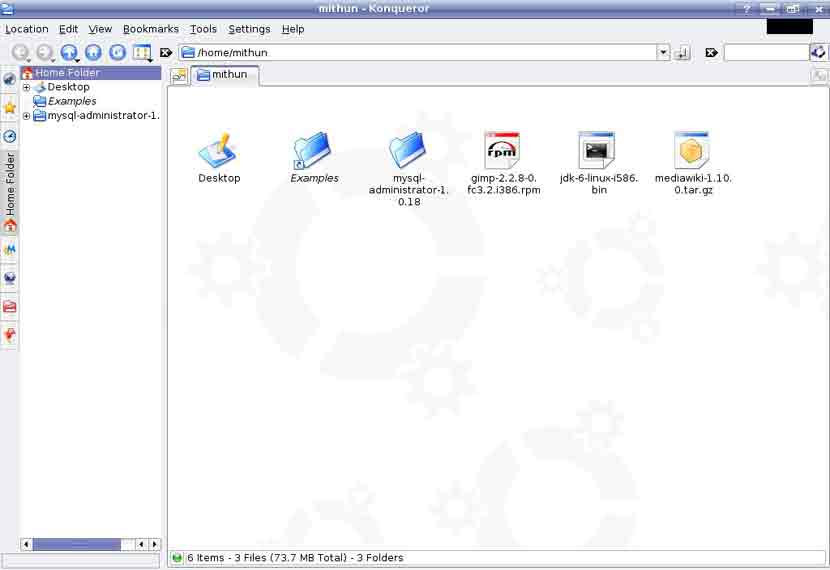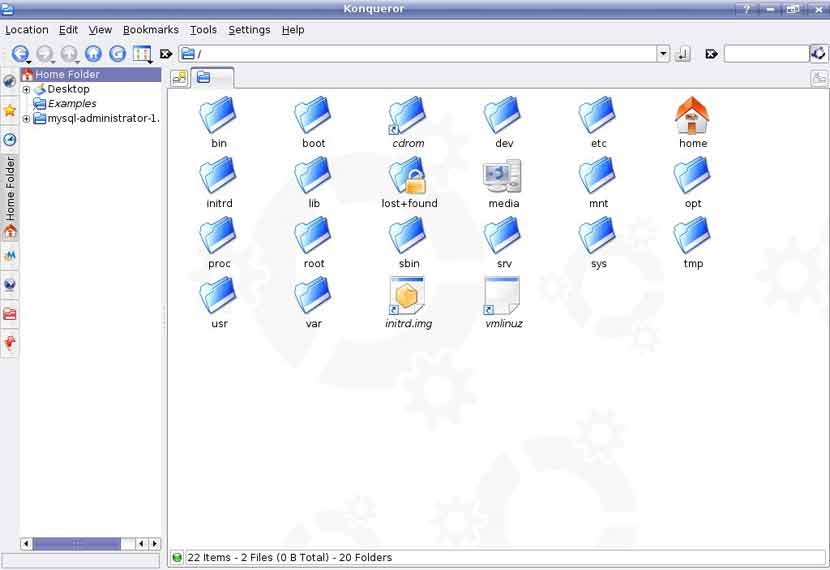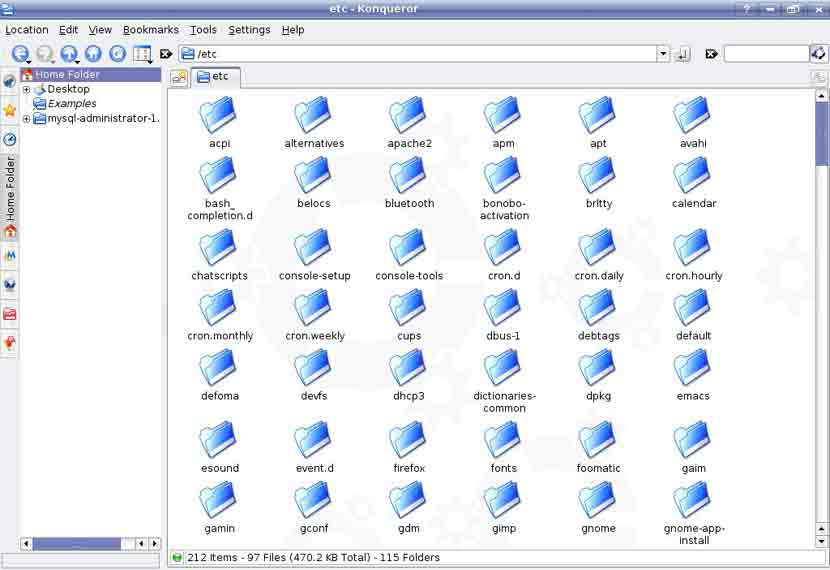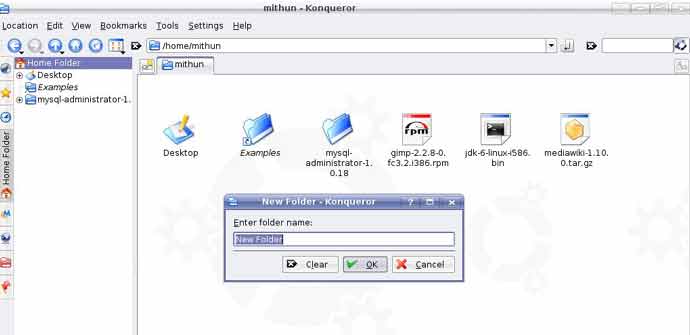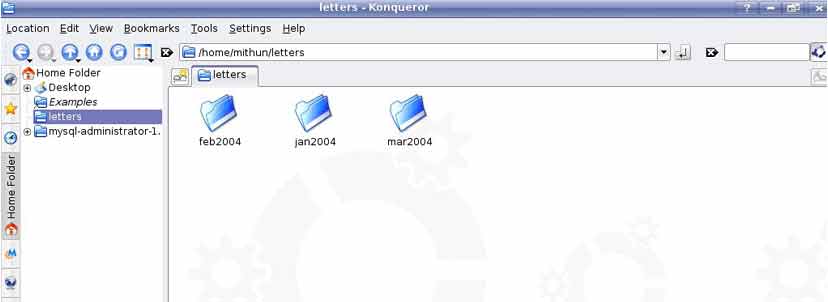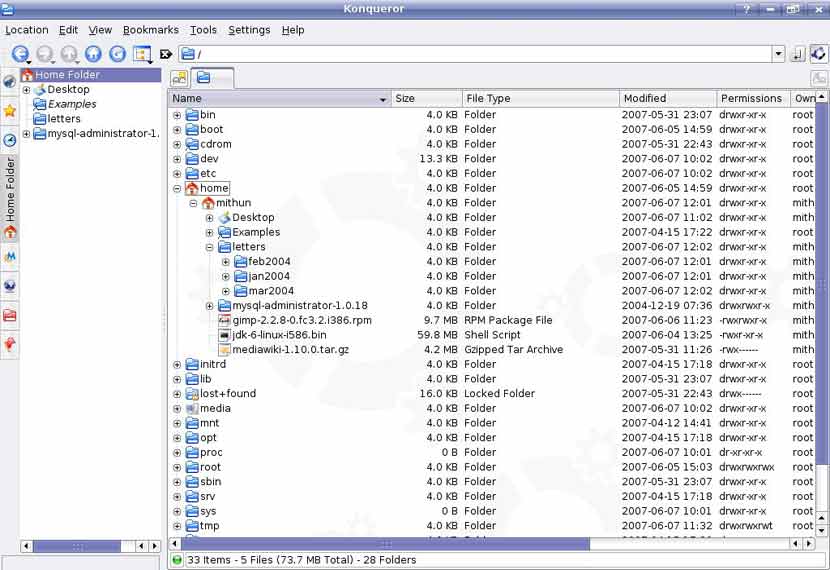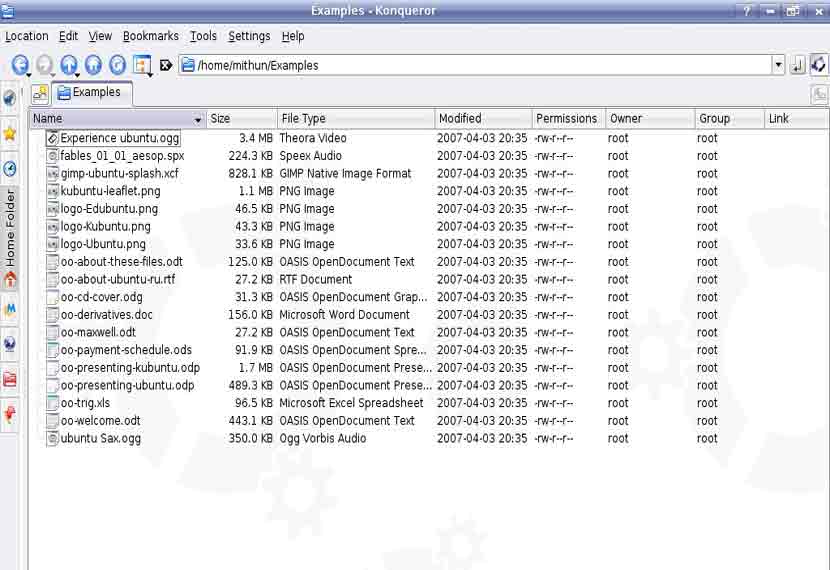Directories/ Folders
Contents
Browse using the Home icon
Click the Home icon either on System Menu or on the desktop.
Because this tool is so important it is found in a number of places. After clicking this icon, the Konqueror browser will open with the start of your home directory displayed.
The Desktop sub-directory is created automatically at the same time as the home directory. Files that are saved to this sub-directory will be displayed as icons on the desktop. The navigation icons are displayed on the left of the toolbar. The Up icon displays the directory one up in the hierarchy. This is also known as the parent of the current directory. It is one step closer to the root of the system.
- Click Up twice. This will display the root of the system. This is the starting point of
the entire directory system.
Although you can see files and directories, you will not be able to manipulate them or delete them. You are only able to work with directories and files to which you have access. Normally these are only files located in your home directory and its sub-directory. The root user is however able to give you access rights to files and directories outside your home directory.
The Back and Forward icons allow you to trace your steps back and forward through the directories you have visited during your current session.
To return to the home directory at any stage, press the Home icon.
To move to a new directory, double click on the icon in the main pane.
- Double click on the etc directory.
You can also type the name of the directory into the location window if you know its path. Recall that Linux file and directory names are case sensitive.
Create a directory/folder and a further sub-directory/sub-folder
The following example illustrates how to create directories and sub-directories in your home directory.
1. Click the Home icon.
2. Edit->New Directory or press F10.
3. Enter the name for the new directory, Letters.
4. Click OK.
5. Edit->New Directory or press F10.
6. Enter the name for the new directory, Articles.
7. Double click on the Letters icon in the main pane.
Notice that the contents of the Location bar now reflect the new directory.
8. Edit->New Directory or press F10.
9. Enter a name for the new sub-directory, Jan2004.
10. In the same way create directories called Feb2004 and Mar2004.
These new directories will be displayed as icons.
You could, if you wish, enter these sub-directories and create another level of sub-directories within each.
1. Work out a meaningful directory structure for your own needs.
2. Create this structure using the method that has just been described.
Open a window to display directory/folder name, size,location on drive
Change View Mode
The default view in Konqueror displays only icons. There are other possible views on a directory.
1. Click on Home and move up to the root level.
2. View->View Mode->Tree View
(view.jpeg)
There are a number of different view options.
3. Click on Home to expand the directory so that its contents will be displayed.
4. Click on your own home directory.
5. Click on the Letters sub-directory.
You should see a display similar to the one on the screen capture.
6. Click the Home icon.
7. View->View Mode->->Detailed List View.
This view will give you the most detailed listing of information on the contents of a directory.
The following screen illustrates a directory containing a number of different types of files.
This screen gives you full information on each file. The first four columns provide the basic information on file name, size, File Type and when the file was last Modified. With regard to the Modified column, it is important that your clock and calendar settings are correct. If not, the information in this column will be useless.
Permissions The permissions column provides information on access rights to the files and directories. Access rights refer to the permissions users have to perform various actions on files and directories.
Each file has an owner and a group associated with it. A group is a set of users collected together under a single group name. The permissions consists of three sets of three characters. The first three refer to the access rights of the owner, the second three of the group and the third set to all other users.
rwx means read, write and execute rights.
r-x means read and execute rights only, not write rights.
r-- means read only rights, not write or execute rights.
--x means execute rights only, not read or write rights.
--- means no rights at all.
If a file has permissions given by rwxr-xr-- this means that the owner has rwx (read, write and execute) rights, the group has r-x (read and execute only) rights and all other users have r-- (read only) rights. The owner and group associated with a file or directory are specified in the next two columns. Owners, groups and permissions can be changed by users who have the necessary access rights to the files or directories. Link: Linux allows you to create a symbolic link to a file in another directory. The link allows a file to be treated as if it is located in a directory while residing elsewhere. The link column sets out the details of symbolic links when appropriate.
